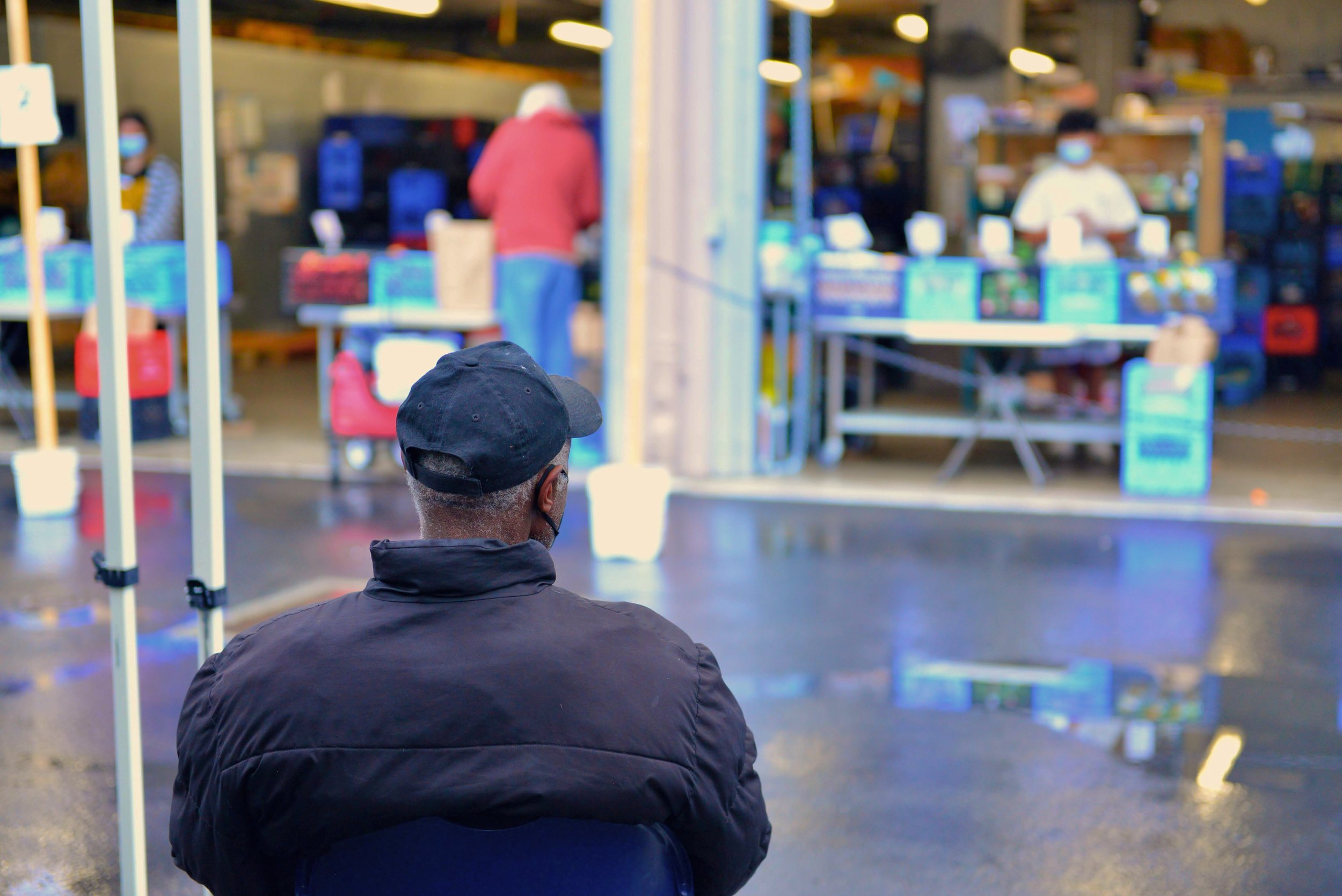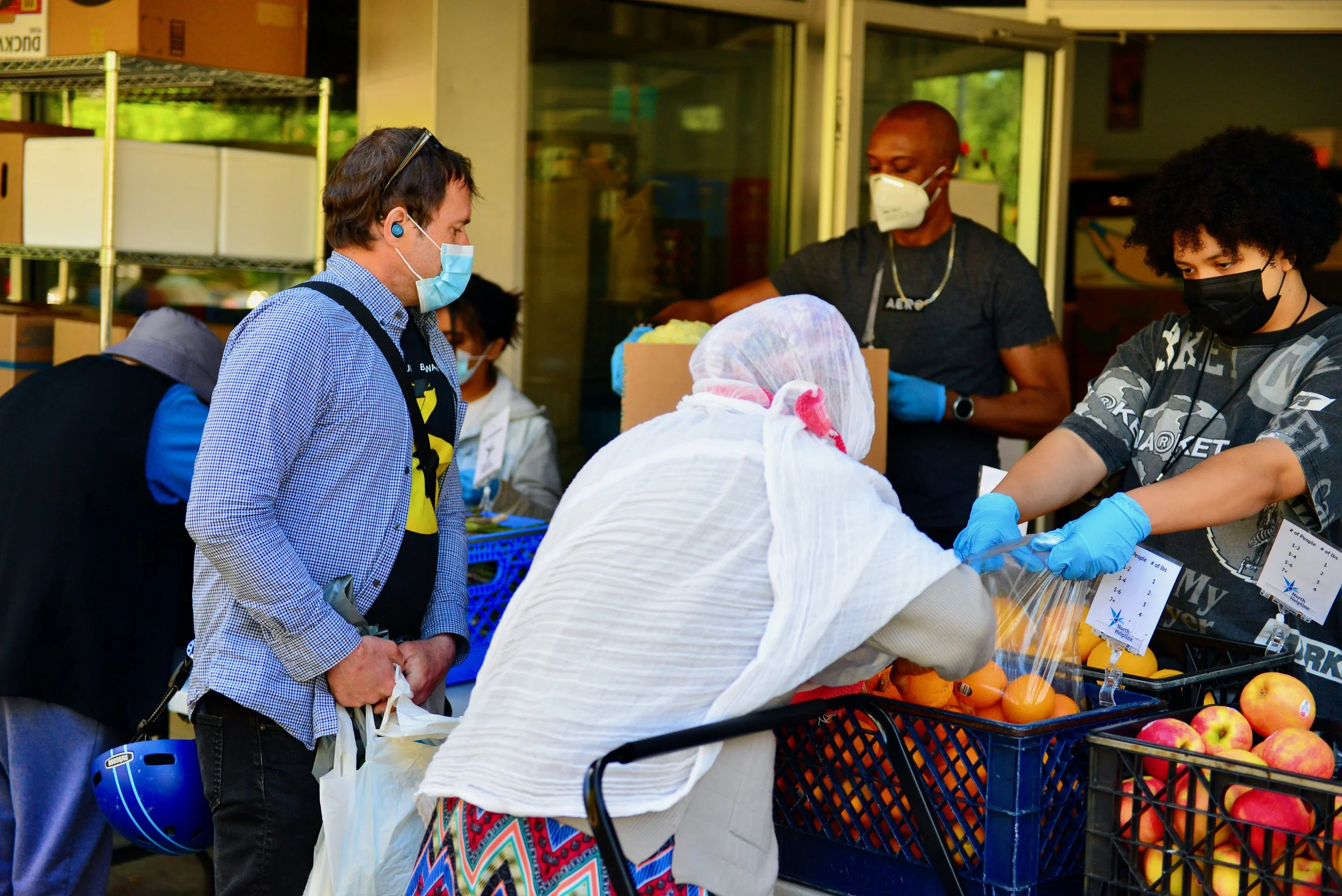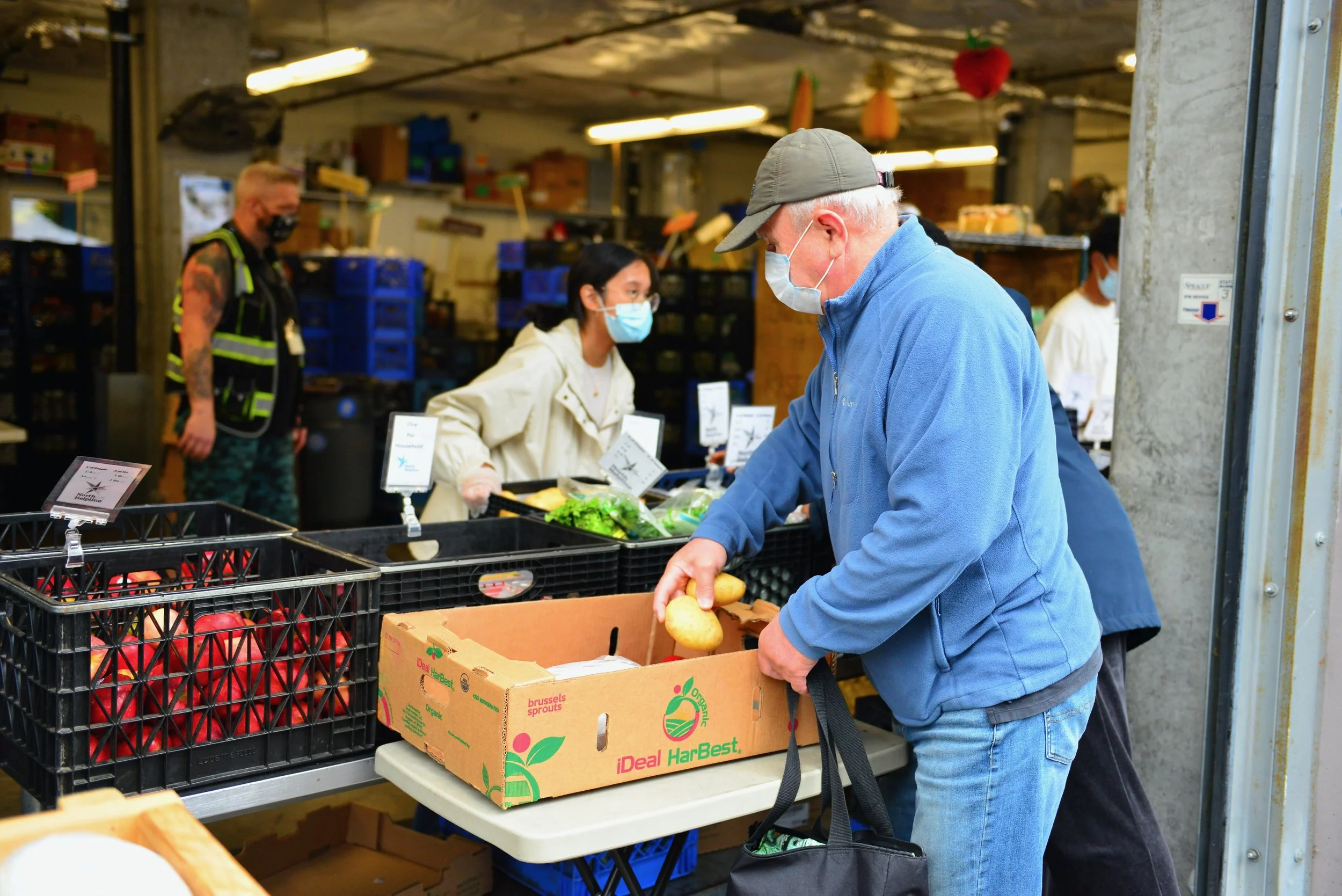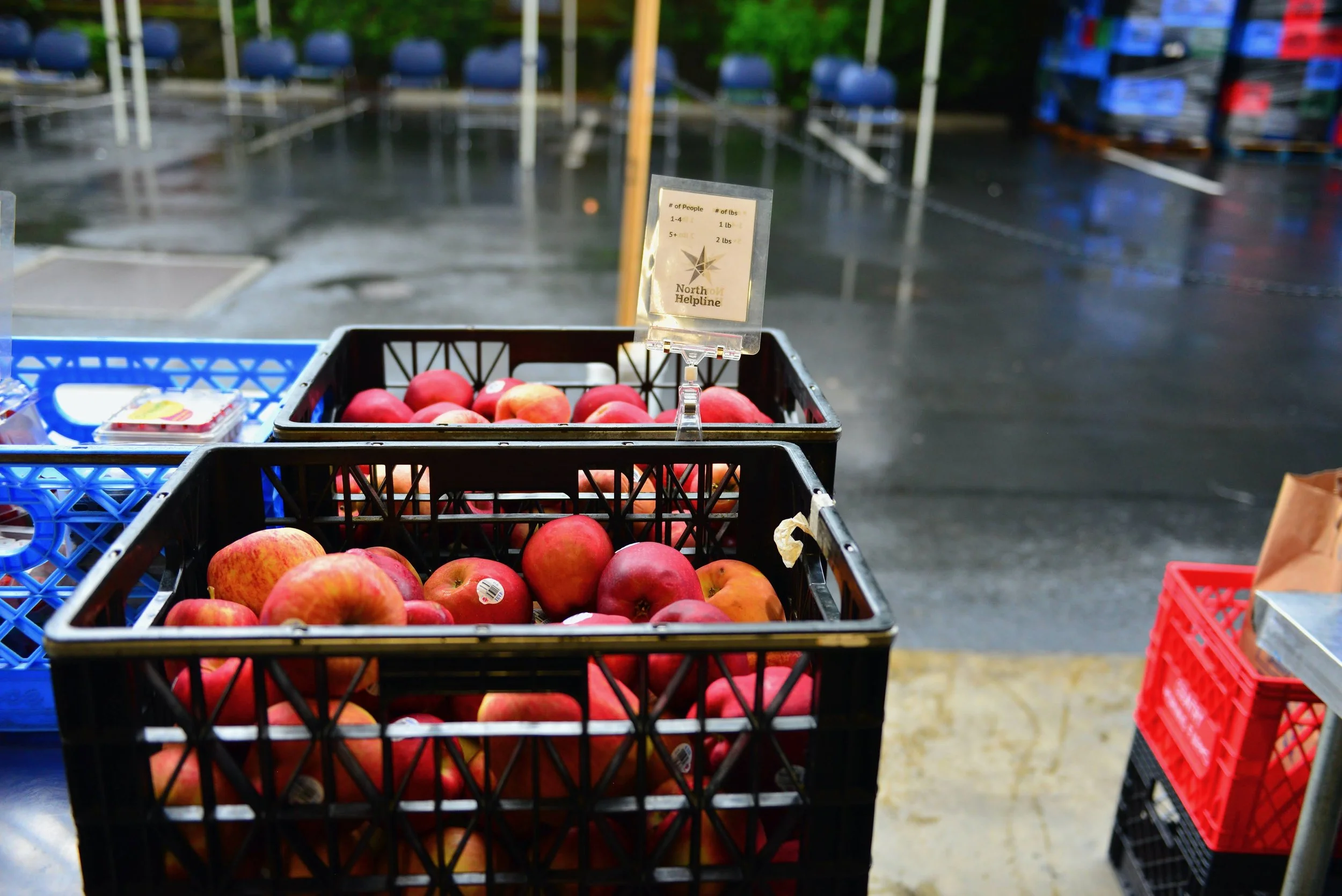Why are local food banks seeing so many new neighbors?
“If we’re nearing full employment, and still have record lines at food banks, something remains off kilter, no?” says the Seattle Times.
We agree. It’s tough to afford even the basics in our city, even when working full-time.
“How is it that with only a 3% jobless rate in Seattle — and nationally “a historically strong labor market with low unemployment,” says The Times — there’s also a rush on the food banks?”
Simply put, things are too expensive, and jobs are paying too little for the majority of families to be secure living in our community.
The majority of neighbors that visit North Helpline for food or rent support are working, but it is not enough to make ends meet.
Sadly, it’s only getting harder out there. Food banks across the city are seeing overwhelming increases in the folks visiting them.
“…the top 20% of households now make an astonishing average of $400,000 a year.”
Meanwhile, 20% of Seattle families make less than before the pandemic, at just $18,000 a year.
And what about the folks that are retired or unable to work? Over 50% of folks that visit our Bitter Lake location are over the age of 55.
Many elders in our community share with us their concerns about having to move away from the city they’ve lived in just to afford a home.
Access to food and housing has decreased for most families since the pandemic began. Prices continue to rise, and families make less. The temporary boost to federal food programs during covid has ended all at once, leaving many neighbors without options.
We know that solving these issues takes time.
Hope remains, for there are things that we can do right now to make things better for local families while we work together on the longer solution.
We can keep food on the table and a roof overhead of our neighbors by supporting local direct-service organizations like North Helpline.
For the past 34 years we have served our community, and until a trip to the grocery store is no longer a luxury, we will continue to.
Let’s come together as a community and say that every family will have access to food and shelter.
· So that children will be nourished and energized for a day at school.
· So families can stay together, warm and in their homes.
· So that we can stay strong and resilient as a community, ready to tackle other challenges with one another.





